GILLIAN COOPER says make it easy for yourself – and your poultry​

If you planned well in the summer and thought about the cold, the dark and the possibility of avian flu hitting these shores again, then you'll be well prepared for whatever weather or circumstances throw at you.
If you didn't then there is still a little time to sort out your poultry housing and make sure that if you have to, you can house them away from wild birds and most importantly, keep them contented by providing stimulation, plenty of space and thinking about mixing the birds.
When confined it is more important than ever that birds are not bullied by others and that you do not have too many male birds in with females – to be precise one only per group of females. Either keep the males together out of sight of the females – they are more likely to be content and not fight – or be big and brave and get the males humanely slaughtered for your freezer.
Interior Design
You can help the shyer members of the flock by making runs with different heights within it so that you perches or straw bales above the floor. This will give those further down the pecking order, the chance to get away from the others. The big free range farms are now very good at this sort of technique. You can also put in tree branches or anything that gives varying heights. Include an area of sand for bathing and diatomaceous earth in it as this will help in the prevention of red mite. You can tie vegetables up for them to peck at – Brussels sprouts will be in the shops soon and even supermarkets have them on the stalk these days. Hens also like swede cut into segments.
Ensure they have a balanced ration in the morning, laying mash or pellets for example and a 'scratch' feed in the afternoon, early evening of corn.
Check the protein level on your bagged feed - for high layers you will need a 16% protein instead of the usual 13%.
هذه القصة مأخوذة من طبعة Nov - Dec 2017 من Practical Poultry.
ابدأ النسخة التجريبية المجانية من Magzter GOLD لمدة 7 أيام للوصول إلى آلاف القصص المتميزة المنسقة وأكثر من 9,000 مجلة وصحيفة.
بالفعل مشترك ? تسجيل الدخول
هذه القصة مأخوذة من طبعة Nov - Dec 2017 من Practical Poultry.
ابدأ النسخة التجريبية المجانية من Magzter GOLD لمدة 7 أيام للوصول إلى آلاف القصص المتميزة المنسقة وأكثر من 9,000 مجلة وصحيفة.
بالفعل مشترك? تسجيل الدخول
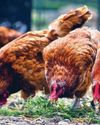
Growing food for Chickens
Mary Larham explores some crops to grow on your holding…
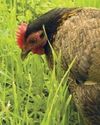
Poultry in the garden – the truth!
Jo-Jane Buxton shares her experiences

The British Waterfowl Association
Which came first, the goose or the egg?

WHY FIT A FAN IN AN INCUBATOR?
Brinsea Products, the Incubation Specialists explain the difference between still air and forced draught
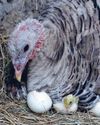
Incubating turkey eggs
Janice Houghton-Wallace looks at broody turkeys and artificial incubation

Chicken nesting box herbs
Diana Clauss owns The Blue Feather Farm, in St Cloud, Florida, home to chickens, ducks, goats, and Anatolian Shepherd dogs.
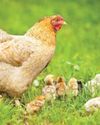
Incubate in January?
Jessica Wombwell says plan the breeding
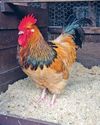
Andy's DIARY
Andy emphases the importance of keeping out damp and wet but allowing ventilation even in cold weather

Feeding for Breeding
It may be winter, but as Joanna Palmer, nutritionist for Smallholder Range explains, now’s the time to get your flock in tiptop shape and plan ahead for a successful breeding season next spring.
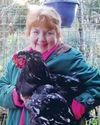
A chick named Cuckoo raised by a duck!
Chris Hammacott and her husband live on a small croft in the Outer Hebrides, they keep a ‘no kill’ flock or rare and rescue sheep which they use to spin and weave rugs. They also share the 8 acres with hens, ducks, cats and 9 rescue pugs.